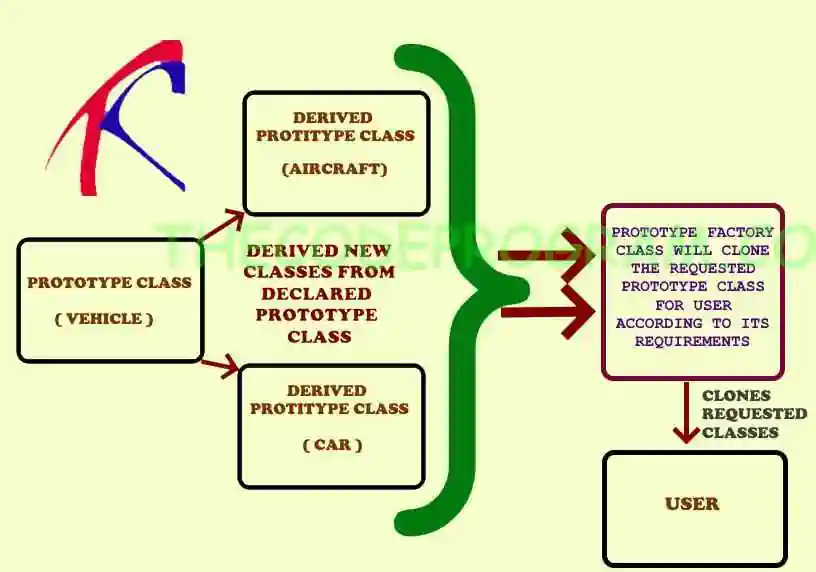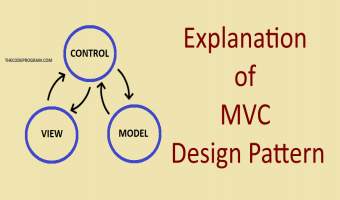
Explanation of Prototype Design Pattern in C++
Hello everyone, in this article we are going to talk about Prototype Design Pattern within Creational Design Patterns. We are going to make an example with C++ and Qt.Let's get started.
Firstly What is Prototype Design Pattern
Sometimes we may need different components which based on same things. For example: All of us are using button in our projects. But we also see ImageButtons that just have a few changings from standart button.
Prototype Design pattern helps us to copy or clone a prototype class and produce new classes on this cloned class.
In our projects using the prototypes to produce somethings are making tasks flexible and easier. Because We have a component and just clone it and add the behaviours you want. So system is getting simplified and we write less code. Also we can build more dynamic systems with less complexilibity. Prototype Design Pattern is very helpful in all Object Oriented Programming Languages.
Now lets write some code :)
ALL CODES WILL BE IN MAIN.C FILE. SO DO NOT NEED TO CREATE ANY HEADER FILES FOR THIS EXAMPLE.
#include <iostream>
using namespace std;
//Some QT Libraries
#include <QString>
#include <QStringList>
class Vehicle
{
public:
Vehicle(){
parts.append("Engine");
parts.append("FuelTanks");
}
QString name = "Default" ;
QStringList parts;
virtual Vehicle* clone() const = 0;
virtual void listAllParts() const = 0;
virtual void setVehicleName(QString name){ this->name = name; }
virtual void addParts(QString part) { parts.append(part); }
virtual ~Vehicle() { cout << "Vehicle Class has been destroyed and memory released...\n\n"; }
};
Here we create our concrete prototype classes which derived from above base class. This classes are going to be cloned according to user requirements via Prototype Factory Class.
class Aircraft : public Vehicle
{
public:
Aircraft(){
addParts("IFE");
addParts("Passenger Seats");
}
Aircraft* clone() const { return new Aircraft; }
void listAllParts() const {
cout << "Vehicle Type : Aircraft\n";
cout << "Vehicle Name : " << name.toLocal8Bit().constData() << endl;
for(int i =0; i< parts.length(); i++){
cout << "Part: " << parts.at(i).toLocal8Bit().constData() << endl;
}
cout << "------------------------------\n";
}
};
class Car : public Vehicle
{
public:
Car(){
addParts("Mirrors");
addParts("Shift Gear");
}
Vehicle* clone() const { return new Car; }
void listAllParts() const {
cout << "Vehicle Type : Car\n";
cout << "Vehicle Name : " << name.toLocal8Bit().constData() << endl;
for(int i =0; i< parts.length(); i++){
cout << "Part:" << parts.at(i).toLocal8Bit().constData() << endl;
}
cout << "------------------------------\n";
}
};
class PrototypeFactory {
public:
~PrototypeFactory(){ cout << "Prototype Factory Has been destroyed and memory released\n\n"; }
Vehicle* vehicle_prototypes[2]{
new Aircraft, new Car
};
Vehicle* preparePrototype( int prototypeIndex ){
return vehicle_prototypes[prototypeIndex]->clone();
}
};
static int INDEX_AIRCRAFT = 0;
static int INDEX_CAR = 1;
int main() {
Vehicle *vec;
PrototypeFactory *pFactory = new PrototypeFactory();
vec = pFactory->preparePrototype(INDEX_AIRCRAFT);
vec->setVehicleName("Boeing... ");
vec->addParts("MCAS");
vec->addParts("EICAS");
vec->listAllParts();
//Created another type of same component
vec = pFactory->preparePrototype(INDEX_AIRCRAFT);
vec->setVehicleName("Airbus... ");
vec->addParts("ECAM");
vec->listAllParts();
//Created another type of same component
vec = pFactory->preparePrototype(INDEX_CAR);
vec->setVehicleName("MURAT124... ");
vec->addParts("SALLOW DOG");
vec->addParts("DISCO BALL");
vec->addParts("SUBWOOFERS");
vec->listAllParts();
delete pFactory;
delete vec;
return 0;
}
That is all in this article.
You can reach the example code on Github : https://github.com/thecodeprogram/TheSingleFiles/blob/master/QPrototypePattern_Example.cpp
Burak Hamdi TUFAN






Comments